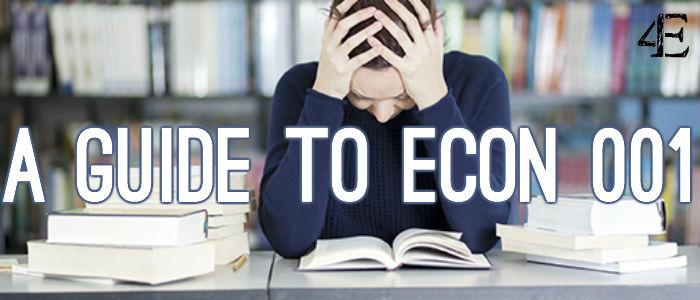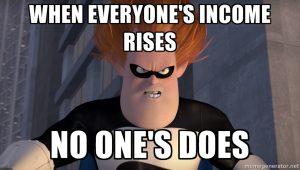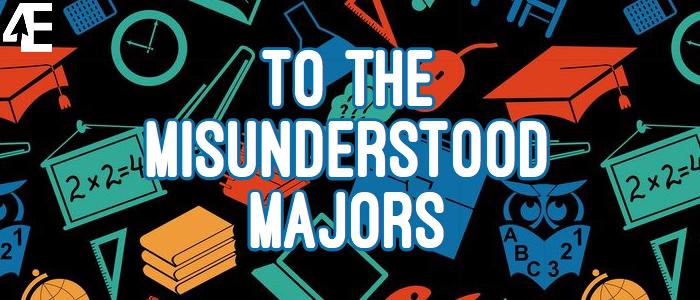 Finals are upon us. Lau has become ridiculously crowded and the beautiful weather outside mocks all the gloomy students on campus. We know how stressful finals can be on the Hilltop, so your friends here at 4E have decided to help you out by typing up a few study guides. At least 250 students will be taking an Econ 001 exam soon but, luckily for you all, I’m a TA for that class. I am happy to impart my wisdom upon you.
Finals are upon us. Lau has become ridiculously crowded and the beautiful weather outside mocks all the gloomy students on campus. We know how stressful finals can be on the Hilltop, so your friends here at 4E have decided to help you out by typing up a few study guides. At least 250 students will be taking an Econ 001 exam soon but, luckily for you all, I’m a TA for that class. I am happy to impart my wisdom upon you.
Here is what you need to know for your “Intro to Microeconomics” exam:
Lesson #1: Supply and Demand: If you’re in the class and still can’t understand the basics of supply and demand, there is a good chance you’ll fail this final! But, for our less economically inclined readers, let me explain. People sell stuff, and other people buy stuff (simple, right?). However, these curves unfortunately move around for all sorts of reasons that no one really understands. Luckily for us, one of those reasons is Ryan Gosling:
 Lesson #2: Normal vs. Inferior Goods: In economics we like to judge people’s choices harshly by declaring that certain goods are inferior to others. Essentially, an inferior good is a cheaper good that you want less of when your income rises. Well, that kind of makes sense but then why is the demand for Natty so high at Georgetown? After I get my paycheck from being a TA, and my income rises, I go straight out and buy myself some cheap-ass Andre. Looks like some economist must have overlooked this crazy phenomenon…
Lesson #2: Normal vs. Inferior Goods: In economics we like to judge people’s choices harshly by declaring that certain goods are inferior to others. Essentially, an inferior good is a cheaper good that you want less of when your income rises. Well, that kind of makes sense but then why is the demand for Natty so high at Georgetown? After I get my paycheck from being a TA, and my income rises, I go straight out and buy myself some cheap-ass Andre. Looks like some economist must have overlooked this crazy phenomenon…
 Lesson #3: Budget Constraints: Although I wish I could buy an unlimited amount of Andre and easy mac, I do unfortunately have budget constraints. Luckily, these constraints change with the price of goods I buy and with my income. However, it’s important to note that what’s weird about income and price changes is that they’re all relative. If prices and income all go up by 10%, you gain nothing.
Lesson #3: Budget Constraints: Although I wish I could buy an unlimited amount of Andre and easy mac, I do unfortunately have budget constraints. Luckily, these constraints change with the price of goods I buy and with my income. However, it’s important to note that what’s weird about income and price changes is that they’re all relative. If prices and income all go up by 10%, you gain nothing.
 Lesson #4: Externalities: Occasionally, people do things that harm you indirectly. For example, when your neighbors host random parties at 2am on a Tuesday and you can’t sleep. This would effect your benefits, and thus changes the socially optimal quantity of parties. Clearly this is hypothetical since the socially optimal number of parties is infinity.
Lesson #4: Externalities: Occasionally, people do things that harm you indirectly. For example, when your neighbors host random parties at 2am on a Tuesday and you can’t sleep. This would effect your benefits, and thus changes the socially optimal quantity of parties. Clearly this is hypothetical since the socially optimal number of parties is infinity.
So, if you can memorize these four lessons, you might be almost, sort of, half way to passing your Econ 001 exam! Just remember kids, getting an A in this class will basically define the rest of your life. Happy Studying!
Photos: memgenerator.com, depaultla.org, imgur.com, quickmem.com, reddit.com
















